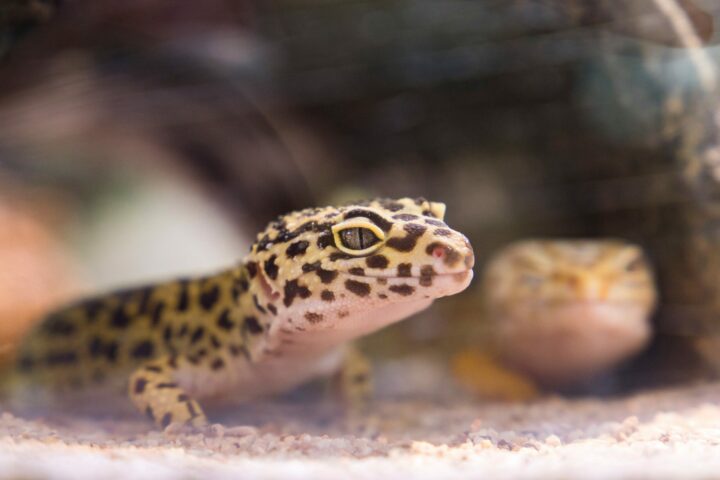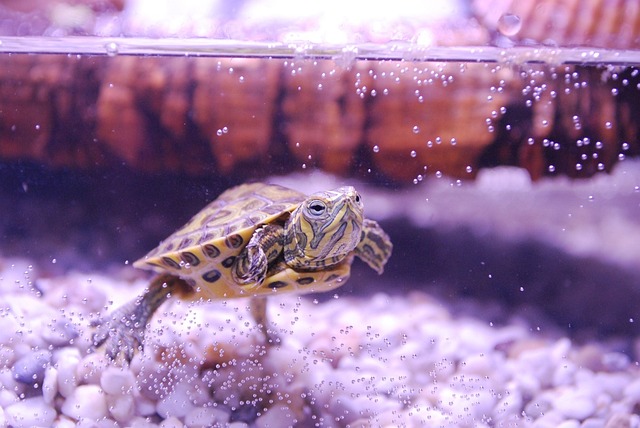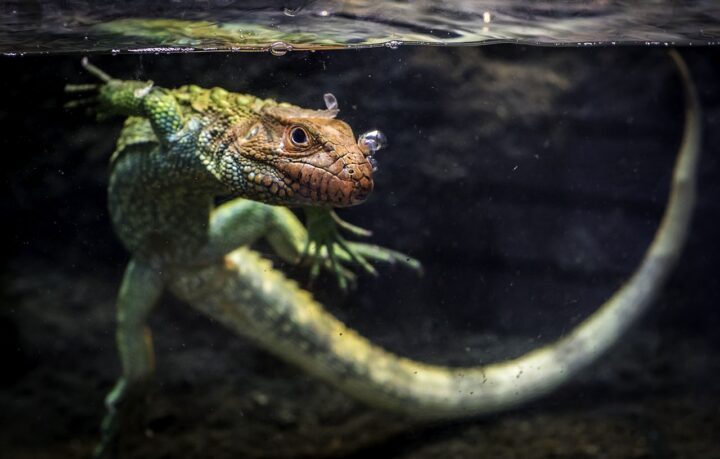Maintaining a clean and healthy environment is essential for the well-being of your scaly companions. Properly cleaning and maintaining a reptile enclosure not only ensures the longevity of their habitat but also contributes to their overall health and happiness.
In this article, we will dive into the world of reptile enclosure maintenance, providing you with expert tips and tricks to create a thriving space for your reptilian friends.
How often should you give your reptile’s enclosure a thorough cleaning?
It’s a question many reptile owners ask. The frequency of cleaning depends on various factors such as the size of the enclosure, the number of reptiles, and their species. As a general rule, it’s recommended to clean the enclosure at least once a month.
However, certain reptiles, like those with higher waste production or sensitive respiratory systems, may require more frequent cleaning. Observing the cleanliness of the enclosure and monitoring any odors can also guide you in determining if it’s time for a cleaning session.
What cleaning products are safe for reptile enclosures?
When it comes to selecting cleaning products for your reptile’s enclosure, safety is of utmost importance. Avoid using harsh chemicals or products that contain toxins, as they can be harmful to your scaly friend.
Opt for reptile-safe cleaning solutions specifically designed for enclosures. These products are formulated to effectively clean without posing a risk to the health of your reptile. Always read the labels and follow the instructions provided by the manufacturer to ensure proper usage and minimize any potential risks.
Should I remove my reptile during the cleaning process?

While it’s not always necessary to relocate your reptile, it’s generally recommended to do so for their safety and to make the cleaning process easier. Relocating your reptile to a temporary enclosure or a secure holding area allows you to clean the enclosure thoroughly without the risk of harming or stressing your scaly friend.
Ensure that the temporary enclosure provides a suitable environment with appropriate heating, lighting, and hiding spots to keep your reptile comfortable during the cleaning process.
What are the crucial steps to follow when cleaning an enclosure?
Properly cleaning a reptile enclosure involves several crucial steps. Begin by removing your reptile and any accessories or decor items from the enclosure.
Dispose of any waste material and uneaten food. Next, empty and clean the water dish and replace it with fresh water. Remove any bedding or substrate and replace it with a clean and appropriate material for your reptile species.
Use a reptile-safe cleaning solution and a soft cloth or sponge to clean the walls, floor, and other surfaces of the enclosure. Finally, allow the enclosure to dry completely before reintroducing your reptile.
Can I reuse the substrate or bedding in the enclosure?
It depends on the condition and type of substrate. If the substrate is soiled or shows signs of mold, it’s best to replace it entirely. Reusing contaminated substrate can expose your reptile to harmful bacteria and compromise their health.
However, if the substrate is clean and in good condition, you can sanitize it by baking it in the oven at a temperature of around 250°F (121°C) for about 30 minutes. This process helps eliminate any potential pathogens and makes the substrate safe for reuse.
How do I prevent the growth of mold and bacteria in the enclosure?
To prevent the growth of mold and bacteria in your reptile’s enclosure, maintaining proper humidity levels is essential. Different reptile species have specific humidity requirements, so it’s crucial to research and understand the needs of your particular reptile.
Regularly monitor the humidity levels using a hygrometer and make adjustments as needed. Adequate ventilation and proper cleaning practices also play a role in preventing mold and bacterial growth.
Regularly remove any wet or soiled substrate, clean the enclosure thoroughly, and ensure proper airflow to minimize the chances of mold and bacteria thriving.
Are there any specific temperature and humidity levels to maintain while cleaning?

During the cleaning process, it’s important to maintain specific temperature and humidity levels to ensure your reptile’s well-being. Some reptiles are more sensitive to changes in temperature and humidity, so it’s crucial to replicate their natural habitat as closely as possible.
Use a digital thermometer and hygrometer to monitor and maintain the appropriate temperature and humidity ranges for your reptile species. Consider using a reptile-specific heating and lighting system to provide the necessary warmth and light during the cleaning process, keeping your scaly friend comfortable and stress-free.
Is it necessary to sanitize the enclosure regularly?
Sanitizing the enclosure regularly is highly recommended to maintain a clean and healthy environment for your reptile. While routine cleaning helps remove visible dirt and waste, sanitizing goes a step further by eliminating any potential pathogens.
Use reptile-safe disinfectants or cleaning solutions specifically formulated for enclosures. Thoroughly clean and disinfect all surfaces, accessories, and decor items in the enclosure.
Allow sufficient drying time before reintroducing your reptile. Regular sanitization helps minimize the risk of infections and keeps your reptile’s home a safe and hygienic place.
What are the signs of an unhealthy or dirty reptile enclosure?
Recognizing the signs of an unhealthy or dirty reptile enclosure is crucial for the well-being of your scaly companion. Keep an eye out for any foul odors emanating from the enclosure, as they can indicate the presence of waste buildup or bacterial growth.
Visible signs of dirt, debris, or mold are also indications that a thorough cleaning is needed. Pay attention to your reptile’s behavior and health.
If they appear lethargic, have decreased appetite, or show signs of respiratory distress, it may be a sign of an unclean or unsuitable environment. Regular cleaning and maintenance are essential to ensure a healthy and happy reptile.
How do I safely handle reptile waste during cleaning?
When it comes to handling reptile waste during cleaning, safety, and hygiene should be your top priorities. Always wear disposable gloves to protect yourself from potential bacteria or parasites present in the waste.
Use a dedicated scoop or tongs to pick up solid waste and dispose of it properly. For liquid waste, absorb it with paper towels or an absorbent material and dispose of it in a sealed bag.
Avoid direct contact with the waste and wash your hands thoroughly afterward. By following these precautions, you can ensure a clean and safe environment for both you and your reptile.
Can I use natural or homemade cleaning solutions for reptile enclosures?
If you prefer using natural or homemade cleaning solutions for your reptile’s enclosure, there are options available. Vinegar diluted with water can be an effective natural cleaning solution. It has mild disinfecting properties and helps remove dirt and odor.
However, it’s important to note that not all reptiles tolerate the smell of vinegar, so ensure proper ventilation during and after cleaning. Additionally, avoid using essential oils or harsh ingredients that can be toxic to reptiles. Always test any homemade solution on a small, inconspicuous area of the enclosure before using it extensively.
Are there any alternative enclosure cleaning methods to consider?

While traditional cleaning methods are effective, there are alternative enclosure cleaning methods to consider. One such method is using beneficial insects, like isopods or springtails, in a bioactive setup.
These insects help break down waste and maintain a natural balance within the enclosure. This method reduces the need for frequent deep cleaning and promotes a more self-sustaining and natural habitat for your reptile.
However, it’s important to research and understand the specific requirements of a bioactive setup and ensure it is suitable for your reptile species.
Should I clean the enclosure accessories as well?
When cleaning a reptile enclosure, it’s essential to include the accessories as well. Accessories such as hides, branches, and artificial plants can accumulate dirt, waste, and bacteria over time.
Regularly remove these items and clean them thoroughly. Use a reptile-safe cleaning solution or mild soap and water to wash and scrub the accessories.
Rinse them well and allow them to dry completely before reintroducing them to the enclosure. By cleaning the accessories, you maintain a clean and healthy environment for your reptile while extending the lifespan of these items.
How can I keep the reptile enclosure odor-free?
Keeping your reptile enclosure odor-free is a common concern for reptile owners. To tackle this issue, regular cleaning and proper waste management are key.
Remove solid waste promptly and clean any soiled areas thoroughly. Ensure adequate ventilation to prevent the buildup of unpleasant odors.
Using odor-neutralizing products or adding natural odor absorbers, such as activated charcoal or baking soda, can also help eliminate or minimize odors in the enclosure. Regular maintenance and a clean environment will keep your reptile enclosure smelling fresh and pleasant.
What are the common mistakes to avoid when cleaning a reptile enclosure?
| Aspect | Traditional Cleaning | Alternative Cleaning Methods |
|---|---|---|
| Effectiveness | Effectively removes dirt and waste | Breaks down waste naturally and promotes a self-sustaining habitat |
| Frequency | Requires regular cleaning sessions | Reduces the need for frequent deep cleaning |
| Odor Control | May require additional odor-neutralizing products | Naturally helps control odors |
| Time and Effort | Requires manual cleaning and disinfection | Less time and effort involved in maintenance |
| Environmental Enrichment | May need to temporarily remove accessories | Allows accessories to remain in the enclosure during cleaning |
When cleaning a reptile enclosure, it’s important to avoid common mistakes that can potentially harm your reptile or compromise the cleanliness of the habitat. Firstly, never use harsh chemicals or cleaning agents that can be toxic to reptiles. Stick to reptile-safe cleaning solutions specifically designed for enclosures.
Additionally, avoid using abrasive materials that can scratch or damage the enclosure surfaces. Another common mistake is not allowing the enclosure to dry completely before reintroducing your reptile. Moisture can lead to mold growth and respiratory issues.
Lastly, neglecting routine cleaning and maintenance can result in an unhealthy and dirty environment. Regularly clean the enclosure, remove waste, and monitor cleanliness to ensure a safe and comfortable habitat for your reptile.
End notes
In conclusion, proper cleaning and maintenance of a reptile enclosure are essential for the health and well-being of your scaly friend. By following the recommended guidelines and tips provided in this article, you can create a thriving and comfortable habitat for your reptile.
Regular cleaning, safe handling of waste, and the use of reptile-safe cleaning solutions contribute to a clean and hygienic environment. Remember to consider alternative cleaning methods and incorporate the cleaning of accessories to maintain a holistic approach to enclosure maintenance.
By avoiding common mistakes and keeping the enclosure odor-free, you ensure a safe and enjoyable space for your reptile to thrive. With your dedication to maintaining a clean and healthy environment, you’ll provide your reptile with the perfect home they deserve.




